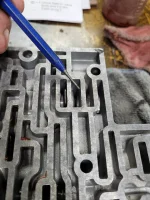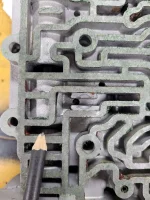jamyers63
Thread starter
- Joined
- May 24, 2023
- Messages
- 47
The band looks good, I'll post a pic of the drum tomorrow. It has a little discoloration (new drum and wide band).
Also will take a closer look at the other frictions.
The sealing rings look good, new teflon ones.
No rust in the stator support. Some other bits were rusty, but we replaced them all.
Pressure switch seals are good, its new as well.
I'll give pressure testing the 3rd Accumulator and let you know.
Also will take a closer look at the other frictions.
The sealing rings look good, new teflon ones.
No rust in the stator support. Some other bits were rusty, but we replaced them all.
Pressure switch seals are good, its new as well.
I'll give pressure testing the 3rd Accumulator and let you know.




